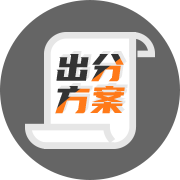

2015-11-17
栏目:考培资讯
SAT阅读一直是中国考生的薄弱项,新通教育为帮助广大考生提高SAT考试成绩,特地精心整理了SAT阅读分类题库。那快来SAT阅读高分素材库汲取营养吧!
Since the late 1970’s, in the face of a severe loss of
market share in dozens of industries, manufacturers in
the United States have been trying to improve productivity
—and therefore enhance their international
(5) competitiveness—through cost—cutting programs. (Cost-
cutting here is defined as raising labor output while
holding the amount of labor constant.) However, from
1978 through 1982, productivity—the value of goods
manufactured divided by the amount of labor input—
(10) did not improve; and while the results were better in the
business upturn of the three years following, they ran 25
percent lower than productivity improvements during
earlier, post-1945 upturns. At the same time, it became clear
that the harder manufactures worked to
(15) implement cost-cutting, the more they lost their competitive
edge.
With this paradox in mind, I recently visited 25
companies; it became clear to me that the cost-cutting
approach to increasing productivity is fundamentally
(20) flawed. Manufacturing regularly observes a “40, 40, 20”
rule. Roughly 40 percent of any manufacturing-based
competitive advantage derives from long-term changes
in manufacturing structure (decisions about the number,
size, location, and capacity of facilities) and in approaches
(25)to materials. Another 40 percent comes from major
changes in equipment and process technology. The final
20 percent rests on implementing conventional cost-
cutting. This rule does not imply that cost-cutting should
not be tried. The well-known tools of this approach—
(30)including simplifying jobs and retraining employees to
work smarter, not harder—do produce results. But the
tools quickly reach the limits of what they can
contribute.
Another problem is that the cost-cutting approach
(35) hinders innovation and discourages creative people. As
Abernathy’s study of automobile manufacturers has
shown, an industry can easily become prisoner of its
own investments in cost-cutting techniques, reducing its
ability to develop new products. And managers under
(40) pressure to maximize cost-cutting will resist innovation
because they know that more fundamental changes in
processes or systems will wreak havoc with the results on
which they are measured. Production managers have
always seen their job as one of minimizing costs and
(45) maximizing output. This dimension of performance has
until recently sufficed as a basis of evaluation, but it has
created a penny-pinching, mechanistic culture in most
factories that has kept away creative managers.
Every company I know that has freed itself from the
(50)paradox has done so, in part, by developing and
implementing a manufacturing strategy. Such a strategy
focuses on the manufacturing structure and on equipment
and process technology. In one company a manufacturing
strategy that allowed different areas of the
(55)factory to specialize in different markets replaced the
conventional cost-cutting approach; within three years
the company regained its competitive advantage.
Together with such strategies, successful companies are
also encouraging managers to focus on a wider set of
objectives besides cutting costs. There is hope for manufacturing,
but it clearly rests on a different way of managing.
3. The primary function of the first paragraph of the passage is to
(A) outline in brief the author’s argument
(B) anticipate challenges to the prescriptions that follow
(C) clarify some disputed definitions of economic terms
(D) summarize a number of long-accepted explanations
(E) present a historical context for the author’s observations
 咨询时间:9:00-23:00
咨询时间:9:00-23:00 咨询时间:
咨询时间: